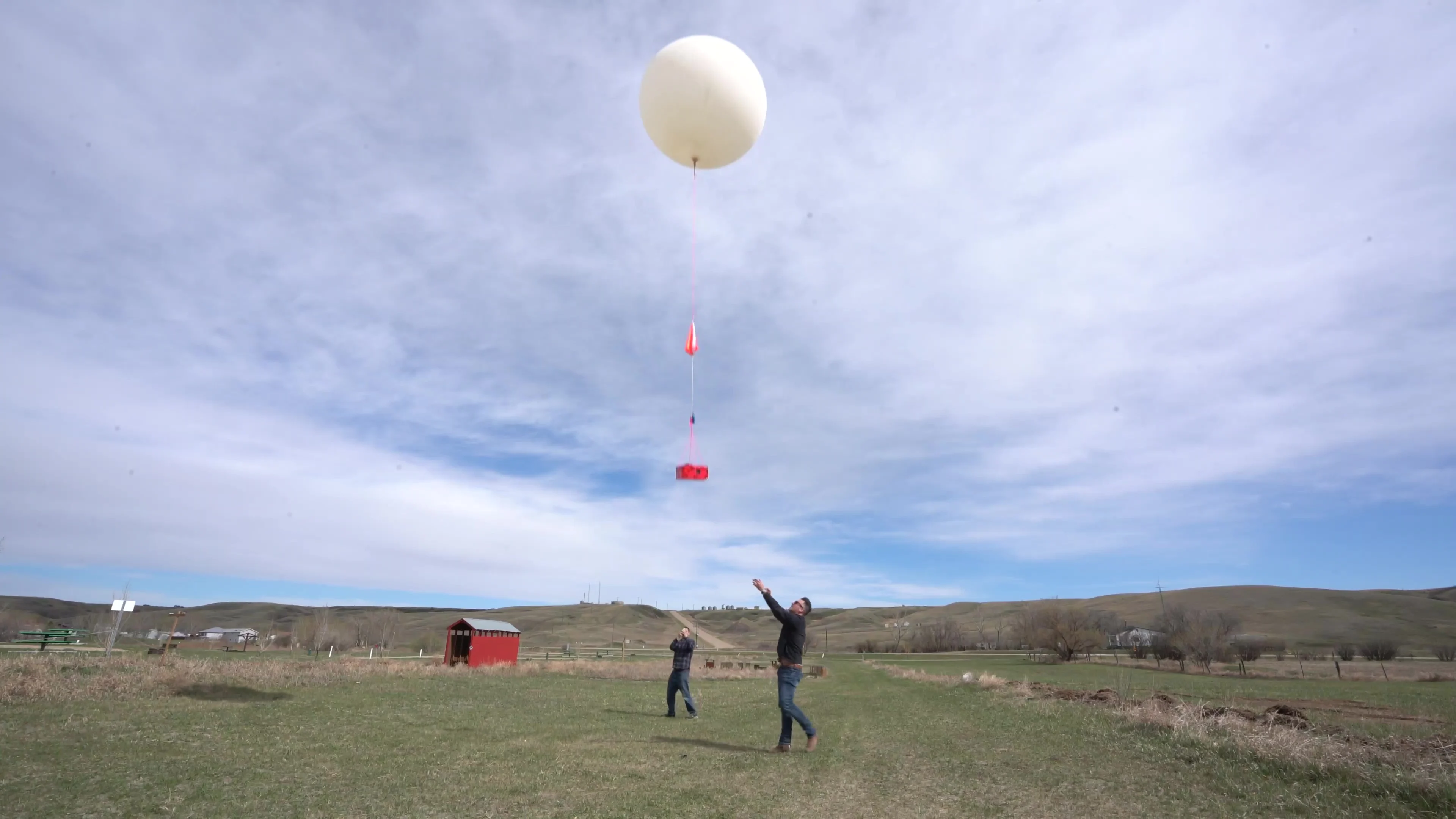
We sent a GoPro to space… for science!
Weather balloons are essential to weather forecasting, but it takes a lot of coordination to send them up—and to track the data they capture. The Weather Network's Kyle Brittain attached some cameras to a weather balloon to get a better picture of how the process works, and the results were very dramatic.
Move over, SpaceX. There’s a new kid in town.
The Weather Network has gone on its first near-space mission, sending cameras well into the stratosphere attached to a high-altitude weather balloon over Alberta.
Calgary video journalist Kyle Brittain teamed up with amateur radio operators Nick Janzen, Matthew Patrick, and Will Robillard in launching the hydrogen-filled balloon from Carbon, Alberta on a pleasant spring morning. The balloon transported a 1,600 gram package, called a ”payload,” containing two radio transmitters, a GPS device, two GoPro cameras, and a backup power source for the cameras, into the middle atmosphere to capture a unique view of the planet from high altitudes.

(The hydrogen-filled balloon was launched from Carbon, Alberta. Credit: Kyle Brittain/The Weather Network)
The team tracked the balloon via radio signal northeastwards as it rose to a maximum altitude of 31,755 metres (over 100,000 feet) before bursting, sending the balloon’s payload back to Earth under a three-foot parachute, where it landed 71 kilometres away from the launch site after its roughly three-hour flight.
The cameras captured stunning footage of the lower atmosphere as the balloon rose through the clouds to temperatures colder than -50 degrees Celsius, and on into air so thin that the sky appeared black. They also captured the moment the balloon burst — a scene you won’t want to miss.
Watch the video above for the full story — one that promises a wild ride of adventure and some truly out-of-this-world perspectives.